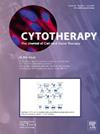Machine learning-driven optimization of hepatocyte functional maturation from hPSC
IF 3.7
3区 医学
Q2 BIOTECHNOLOGY & APPLIED MICROBIOLOGY
引用次数: 0
Abstract
Background & Aim
Producing large quantities of functionally mature hepatocytes remains a significant challenge for clinical applications, including liver failure treatment and preclinical drug testing. Differentiating human pluripotent stem cells (hPSCs) into hepatocyte-like cells (HLCs) offers a promising solution, with numerous protocols developed for this purpose. However, these methods typically yield immature cells lacking the full repertoire of functionalities characteristic of primary human hepatocytes.
We developed machine learning (ML) algorithms capable of predicting hepatocyte maturation directly from live-cell, label-free phase contrast (PC) images. These algorithms were successfully deployed to analyze phenotypic screening data, enabling the optimization of differentiation protocols to produce HLCs with improved functional maturation.
Methodology
hPSC differentiation into HLCs was performed following an 18-day protocol described in Ang et al. 2018. ML models were trained on paired PC and immunofluorescence (IF) images of six markers involved in metabolism, detoxification, and protein synthesis. Models took solely PC images as input and produced a multi-dimensional hepatocyte maturation score as output.
Validated ML models were used to rank and select hits in phenotypic screening experiments where differentiating hPSC-derived HLCs were exposed to small molecules and biologics at varying concentrations, durations, and combinations in iterative cycles. The top-ranking hits were compared to controls in a follow-up validation experiment using gold standard in vitro assays of hepatocyte function – CYP3A4 enzymatic activity, albumin secretion, and urea secretion. A mixed-effect model was used to assess statistical significance.
Results
ML-predicted hepatocyte maturation scores showed strong correlations (Pearson r > 0.97) across a panel of IF markers. Leveraging these ML predictions in live cultures, we rapidly and cost-effectively screened for combinations of molecules that significantly enhanced hepatocyte maturation. This led to generational improvements in protocols in a matter of months, resulting in statistically significant increases in CYP3A4 activity (+55%), albumin secretion (+40%), and urea secretion (+130%) over the baseline.
Conclusion
Our approach highlights a novel, ML-driven approach to optimizing differentiation protocols for improved functional maturation. More generally, this method holds promise for applications in upstream process development as well as downstream quality control.
机器学习驱动的hPSC肝细胞功能成熟优化
背景,产生大量功能成熟的肝细胞仍然是临床应用的重大挑战,包括肝衰竭治疗和临床前药物测试。将人多能干细胞(hPSCs)分化为肝细胞样细胞(HLCs)提供了一个很有前途的解决方案,为此开发了许多方案。然而,这些方法通常产生的未成熟细胞缺乏原代人肝细胞的全部功能特征。我们开发了机器学习(ML)算法,能够直接从活细胞、无标签相位对比(PC)图像中预测肝细胞成熟。这些算法被成功地用于分析表型筛选数据,从而优化分化方案,产生功能成熟程度更高的hlc。方法按照Ang等人2018年描述的18天方案进行hpsc分化为hlc。ML模型使用与代谢、解毒和蛋白质合成有关的六种标记物的配对PC和免疫荧光(IF)图像进行训练。模型仅以PC图像作为输入,并产生多维肝细胞成熟评分作为输出。在表型筛选实验中,经过验证的ML模型被用于排序和选择命中点,在迭代循环中,分化的hpsc衍生的HLCs暴露于不同浓度、持续时间和组合的小分子和生物制剂中。在后续验证实验中,使用肝细胞功能体外金标准测定法(CYP3A4酶活性、白蛋白分泌和尿素分泌)将排名靠前的药物与对照组进行比较。采用混合效应模型评估统计学显著性。结果sml预测的肝细胞成熟评分具有很强的相关性(Pearson r >;0.97)通过一组IF标记。利用这些ML预测在活培养中,我们快速且经济有效地筛选了显著增强肝细胞成熟的分子组合。这导致了几个月内方案的世代改进,导致CYP3A4活性(+55%),白蛋白分泌(+40%)和尿素分泌(+130%)比基线有统计学意义的显著增加。我们的方法强调了一种新颖的、机器学习驱动的方法来优化分化方案,以提高功能成熟度。更一般地说,这种方法在上游工艺开发和下游质量控制中都有应用前景。
本文章由计算机程序翻译,如有差异,请以英文原文为准。
求助全文
约1分钟内获得全文
求助全文
来源期刊

Cytotherapy
医学-生物工程与应用微生物
CiteScore
6.30
自引率
4.40%
发文量
683
审稿时长
49 days
期刊介绍:
The journal brings readers the latest developments in the fast moving field of cellular therapy in man. This includes cell therapy for cancer, immune disorders, inherited diseases, tissue repair and regenerative medicine. The journal covers the science, translational development and treatment with variety of cell types including hematopoietic stem cells, immune cells (dendritic cells, NK, cells, T cells, antigen presenting cells) mesenchymal stromal cells, adipose cells, nerve, muscle, vascular and endothelial cells, and induced pluripotential stem cells. We also welcome manuscripts on subcellular derivatives such as exosomes. A specific focus is on translational research that brings cell therapy to the clinic. Cytotherapy publishes original papers, reviews, position papers editorials, commentaries and letters to the editor. We welcome "Protocols in Cytotherapy" bringing standard operating procedure for production specific cell types for clinical use within the reach of the readership.
 求助内容:
求助内容: 应助结果提醒方式:
应助结果提醒方式:


